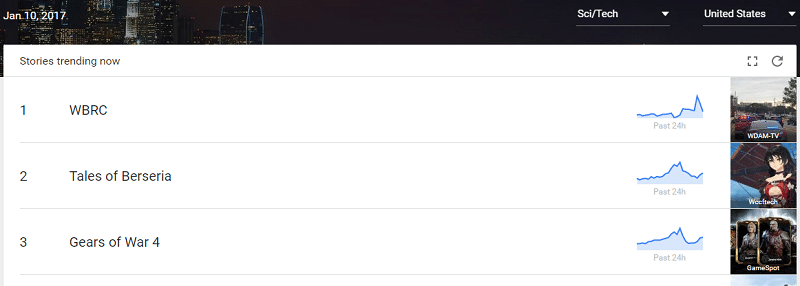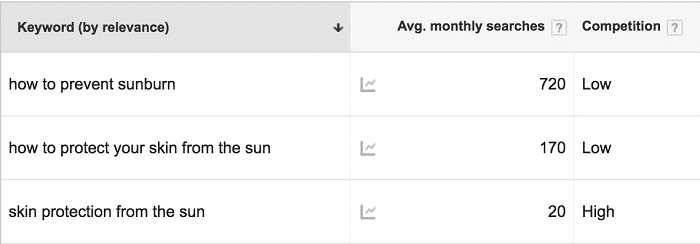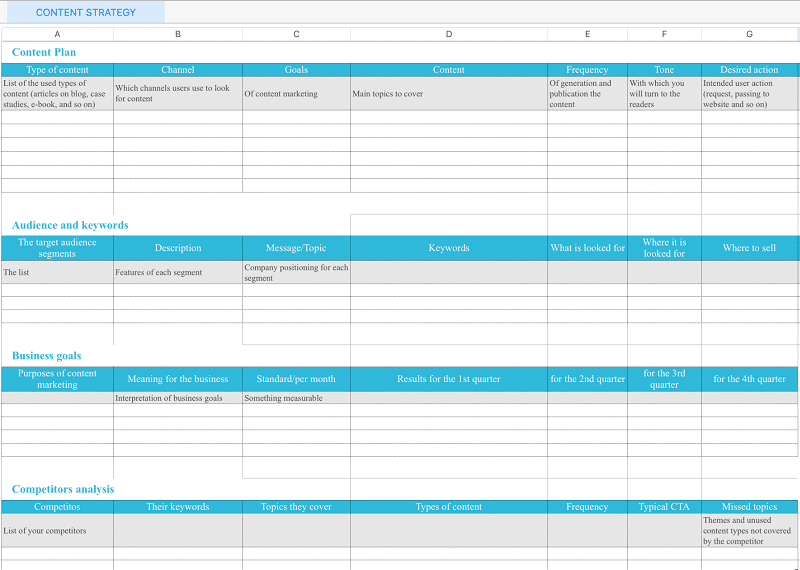Content marketing is the trend of this decade. Entrepreneurs work on sharing their knowledge with readers with the hopes that readers, in their turn, would be impressed enough to happily line up to the cashier.
But when it comes to putting content marketing into action, for some reason, many of us give up.

The reason is actually understandable as, in fact, content marketing is not at all that romantic. It is repetitive, back-breaking research, goal setting, forecasting, planning, along with scrupulous adherence to the plan, production, and promotion.
In this article, I will describe the basic steps that clarify what principles to use when building a content marketing strategy.
I. Describe Your Target Audience
You probably heard many times that content is king. But is it really so? To my mind, it’s not, as the real king is the client. Your content strategy should be built for your target client.
Imagine clearly who exactly your customer is. Mark his needs, fears, and desires. Separate your target audience by segments, and define a typical algorithm for finding information for each: what customers are looking for, and where.
II. Formulate The Key Messages
While formulating key messages for each customer segment, you should rely on the needs, fears, and goals that you have recorded in the first step. Select a typical problem of the segment and describe how you solve it, and then squeeze the description into one sentence.
These are the basic ideas which will become the foundation for all your content marketing. It is desirable to express these ideas in 1-2 phrases or even in the form of a slogan. But do not confuse this with the slogan of the company. A communication slogan describes your content, not your product.
It is also important to remember two things:
- Do not talk about yourself. Do not say that you are an expert. What to talk about? That’s right, about how to solve the problem of your customer.
- Do not create the content for the sake of the content.
III. Formulate The Mission
Every organization needs a mission, as it will be the main basis or ideology for your content marketing.

To formulate the mission, you can answer a few simple questions:
- What do we do? (What kind of business are we in?)
- For whom do we do it?
- Where geographically do we do it?
- How do we do it? (What makes our business unique? What are our competitive advantages?)
- What don’t we do and won’t do in future?
Once you’re done, clearly specify and use your mission in every description of your profile (in social networks, in the ‘About us’ page, and so on).
IV. Set Goals
Define and fix your goals. The goals of your content marketing can be very different. Yeah, of course, to increase brand awareness, customer loyalty and, as a consequence, increase in sales. But goals should be specific and measurable.
For example, doubling Google organic traffic or increasing the number of subscribers to 50%.
Specify the current and desired indicators for each goal for a specific period, such as a year. Be sure to fix the methods and tools for measuring them. Use the five most important indicators. It would help to keep a finger on the pulse to not get lost in the data volume.
V. Analyze Your Competitors’ Actions
Define your main competitors. To make your life easier, use tools like Serpstat, with their advanced competitor research module, or SimilarWeb (assuming that you haven’t already done that, of course).

Your competitors in content marketing will not only be the companies with a similar offer. Some of them also compete with you for content recognition. There are the different online media, information portals, blogs, and the like, that cover the same topics as you do.
Do a review of the content marketing activity of your competitors: how they represent themselves on social networks, blogs, thematic portals, etc., and make a list of the main topics and types of competitors’ content.
Once you collect all the information about these competitors, it’s necessary to understand how to act differently.
For example, if you tackle the same subject, try to change the format. If everybody writes articles about SEO, you can, instead, create a quick tutorial video detailing step by step instructions about how to check readership reaction to your SEO efforts.
VI. Collect Keywords
A weirdly large number of content marketers do not carry out keyword analysis and are guided just by intuition or instincts. Don’t be one of these types.
A thorough keyword analysis lets you predict what is interesting to your audience even before they will tell you about it. Guided by correctly clustered semantic core, you can support your ideas with real data from the SERPs.
VII. Find Your Customers On The Social Networks
Find 5 accounts of your already existing clients.

The found profiles should be analyzed, to understand what kind of content these people share, what they write about, what their psychological drivers are, and what they are interested in, generally. Then, arrange this list of topics by popularity.
VIII. Highlight The Main Topics
Identify key topics of interest for each group of clients; these are the main topics of your content marketing.
So how do you find out what their key problems are? Simple. Just ask! For example, you can arrange a survey in your newsletter. If you have a sales department, talk to them. Find out your audience’s problems. Communicate with customers in social networks (where it is usually easier to do).
Just do not try to invent the target audience‘s problem yourself. Nothing good will come out of it.

IX. Make Headers Templates
Draft your article headers in advance. This will set you on the right track for writing your next piece.
For example:
- Tools and Techniques of Graphic Design
- Develop Yourself in Graphic Design: a Guide to the Use of Essential Tools and Techniques
See the difference?
X. Tone Of Treatment
Determine the tone that you will use to communicate on behalf of your product. Correct tone gives the company its own identity when stacked up against its competitors. To set the tone, try to ask yourself the following questions:
- If your business was a person, what type of person would he be?
- What is the relationship between him and a client (coach, friend, mentor, etc.)?
- What are the epithets he can’t be characterized with?
- How do you want your customers to perceive your business?
XI. Fill The Content Map
The content map is a table with the distribution of types of content. Use the data collected in the previous steps to fill in the table. Specify:
- Content types in order of popularity among your target audience
- The used channels
- Goals
- Desired user actions after meeting with the content (should relate to objectives)
- Frequency of publication
- Basic content and topics
- Headline templates
- Tone of treatment
XII. Where To Find New Ideas Every Day
Yes, I know about that eternal struggle called “What to write about?”. At first, there are so many fresh ideas but then the enthusiasm subsides and you feel that you’ve exhausted all the topics there are to write about.
But you always can bring your muse back.
First of all, ask your sales team, what questions your customers ask and what difficulties they are facing. Your response to these issues can form the basis for excellent new material.
The next source is your professional information field. Follow the specialized media, opinion leaders in the niche. Copying them is not necessary, but be sure to consider all new trends.
And then there are books, magazines, and blogs. You can also attend webinars, conferences, master classes. All this information will give you a good foundation to grow your own ideas.
Also, try Google Trends, which is a nice (and free) way to look for inspiration. By listing what is hot right now, and showing you what has been hot before, this handy web app can give you great ideas on what creative direction you want to head in.
But honestly, to my mind, it doesn’t work much for blogs with clearly bounded topics. Even selecting a Category and location gives a pretty wide range of results, so you still have to be lucky to get something related to your niche.

My favorite way to find out what your potential customers are interested in is Serpstat. This SEO tool has recently rocked on ProductHunt with its feature for Content Marketers that helps to identify SERP trends and find the relevant questions in the form users search for them. You can then create content that contains the users’ most frequently used phrases.
But first of all, it gives tons of inspiration


XIII. [Bonus] Gather Your Content Marketing Strategy
After all this work, you need to combine the results of the previous steps into one big document. And it should look something like this (the image is clickable):
What’s Next?
This is just the beginning. You will still have to create and distribute cool content regularly, collect web analytics data and feedback from readers, edit your strategy, and plan again if necessary.
But if you consistently performed all the previously marked steps, then you’re already holding a clear guide that gives meaning and direction to all further processes, and that helps to make content marketing effective.
So, good luck! And if you have anything else you’d like us to add to this article, please share it with us in the comments section below.


